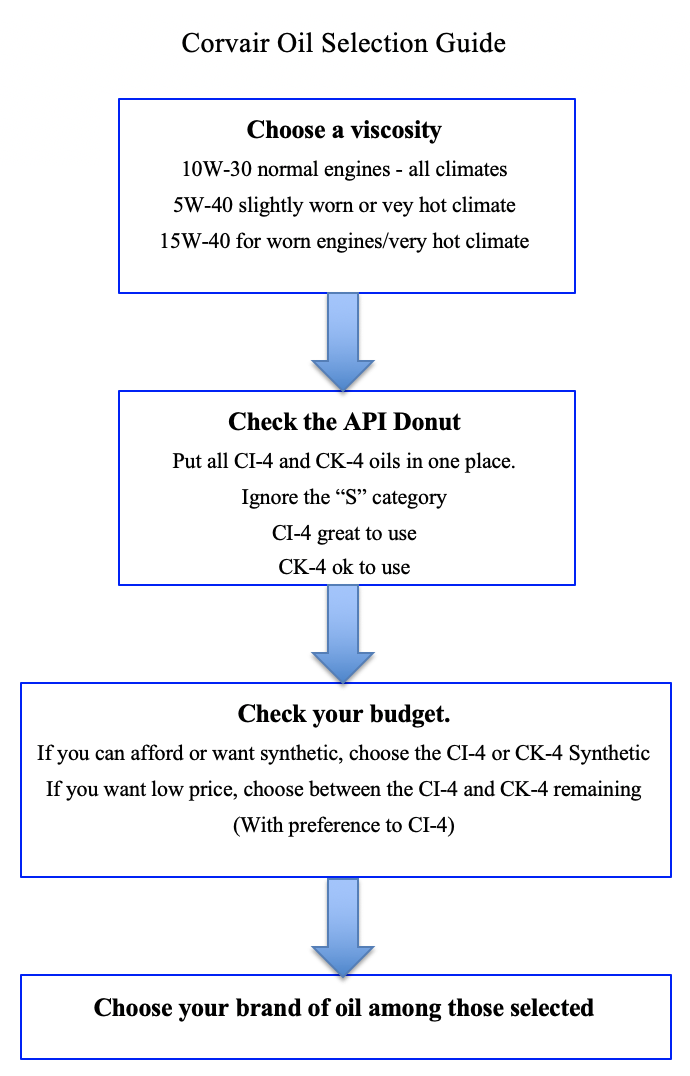Selection of the Right Motor Oil for the Corvair and other Engines
Click here do download the pdf file
Introduction
When I wrote this paper for my Corvair friends, I had no idea it would be so popular. The first draft was in 2009, and it is still being downloaded at a rate of 3,000 per month. Thanks to a reader who sent me a can of oil from the late 60’s, I was able to have my lab analyze the actual formulation. So I decided to include this actual data. I hope it helps understand what oil is all about and how we can protect our engines. Last year’s update specifically addressed the problem with using motorcycle oils as a substitute. This update includes links to a number of oil brand licenses on the API website so that you can easily verify them or see changes they may have made. It is not a complete list of possible oils.
My object in this paper is to explain in common language how to protect your engine through the selection of the correct oil. In this explanation I will be summarizing various SAE Technical Papers with the information pertinent to this explanation. For those who are only interested in the short answer, you can jump to the summary. I will not tell you which brand to buy, but what to look for on the label. I will not repeat word for word what is in the pages of the American Petroleum Institute, but put it in the best lay terms I can think of. Some people will say that there are not enough graphs and charts, while others will say it is overkill. I hope to strike a balance.
- Six main points are:
- Viscosity: How are recommendations determined?
- Viscosity: What happens in the real world?
- Viscosity Shear: The importance and effect of base oil quality.
- Additives and additive clash: What are the consequences of too much of anything.
- Myths and slogans: What is real and what is not.
- Sifting through spec sheets and the API classifications.
Premise
Many questions have been raised about the wear on flat tappet valve trains and other parts of Corvair engines by the reduction of ZDDP in the newer oils (API SN and CK-4) and the desire to add commercial additives to increase those levels. Here we will investigate the advantages and disadvantages of these products and other items that affect wear.
This is the current draft of this paper. I’m sure there will be additional questions that will arise or points that I haven’t explained to the satisfaction of some readers. Please send your questions or suggestions this email. and I will answer them in the next draft.
The comments on oils in the US market are current as of November 2019 and Motorcycle oils in early 2012. The comments on viscosities and the mixing additives are valid for all types of engines.
While I do not plan on frequent updates to this paper, as I add something I will note the major changes here.
- March 2012: Additional information on the error of using motorcycle oils as a substitute.
- March 2013: Actual analysis of an oil from the late 1960’s and comparisons with today’s oils.
- November 2019: Actualize API licenses, products, and a few more clarifications.
Click here do download the pdf file. Current update is November 27, 2019
For those who just want a simple guide to sort through the shelves, here you are.


